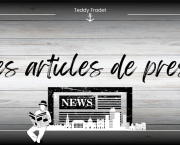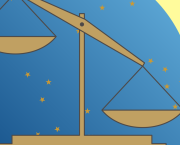
Storytelling secrets for articles, blogs and social media
 5 min
5 min
Storytelling secrets for articles, blogs and social media
One of the best descriptors of writing that's ever written: ‘The book belongs to the reader, not the writer.’
As writers, it is easy to forget that the words we write are just…words. Blank words on paper or a digital screen until the reader brings them to life. With understanding. With imagination. With connection.
So how do you get your reader to connect with a topic they may not care for or know very little about? The solution isn’t really a new one. It is a skill that mankind has relied on since time immemorial: Storytelling.
Every article, blog or social media post that you write is essentially you telling a story. A story of something that has happened or should happen and why it matters. The better you tell the story, and the more relatable you make it, the more likely your reader will be to pause and connect with it.
Three simple yet crucial storytelling tricks to improve your writing are:
#1: Build tension. Then resolve it
Research shows that the human brain is always working to achieve “cognitive closure.” That is, we are a species always looking for answers; we are hardwired to be curious, inquisitive and resolve uncertainty.
Your writing must embrace this principle. Set the stage for a puzzle or problem by telling your reader something that rarely happens, and then go on to announce the news that it has, indeed, happened.
Here’s a quick example: “Centuries of scientific research have been unable to shed light on the components of the atom. Today, one man’s discovery has officially made history.”
The trick is to imagine telling this story to your friend or peer. How would you narrate the developments to hold their interest while also leaving them curious to know more? It is entirely up to you to decide how soon to resolve this ‘tension’ – you could do it in your opening paragraph or build on it as the article progresses. Regular writing will help you better gauge this process more intuitively.
#2: Humanize your story
Technical articles make it harder to engage the reader. A simple way to make your reader care for your story is to humanize the findings or developments. Yes the data, statistics and facts ARE important, but your story becomes more relatable with the addition of people and teams involved in the breakthrough.
Include the names of researchers, academics and other subject experts involved in the story and allude to their struggle and contribution in resolving the tension. This makes your reader better appreciate the impact of the development.
Another tip is to include speaker quotes in the form of brief snippets or excerpts. Well written quotes have a powerful and lasting impact on the reader. Make sure your quotes appear honest, positive, and non-rehearsed. Do not include data and numbers in your speaker quotes; instead rely on the speaker’s emotions and experiences.
#3: Talk impact and why it matters
At the end of the day, readers scan for quick takeaways of the article, and maybe crave a new learning or two. So spend some time breaking down the real-world impact of the findings and explain why they matter.
Some ways to do this effectively:
· Highlight a cause-and-effect relation. Suggest how your news might lead to another new (and significant) development in nature, science, economics, politics, etc.
· Hypothesize why the event occurred and what this could mean for the future of the field or the world.
· Help your reader with follow-up research. Provide links to further reading and include references for your own article.
As a species, storytelling has and always will be one of the most effective ways for us to connect and communicate with one another. With our ever-reducing attention spans and the growing clutter of content, storytelling is a powerful way to engage readers and have them bring your words to life.









 English
English
 Français
Français
 Deutsch
Deutsch
 Italiano
Italiano
 Español
Español



 Contribuisci
Contribuisci









 Puoi sostenere i tuoi scrittori preferiti
Puoi sostenere i tuoi scrittori preferiti





